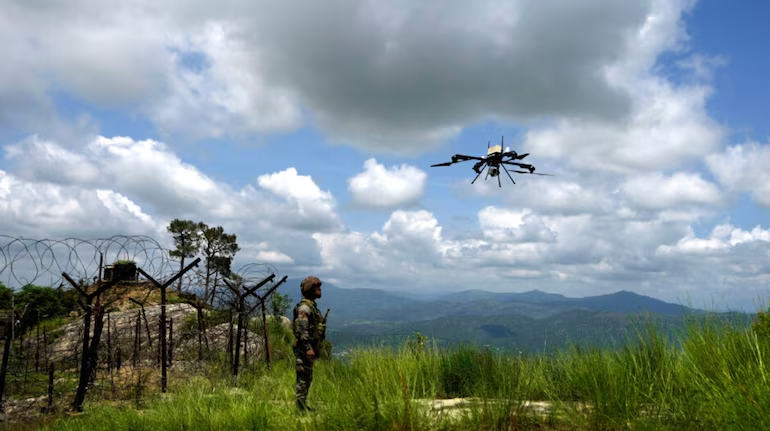The Future of Warfare: How the Indian Army Is Integrating AI, Drone Swarms, and Big Data into Its Operations
- MGMMTeam

- Jul 21
- 3 min read
The landscape of modern warfare is evolving at an unprecedented pace, driven by advances in artificial intelligence (AI), machine learning (ML), and data analytics. Recognizing this transformation, the Indian Army has embarked on a comprehensive plan to integrate these cutting-edge technologies into its operational framework by 2026–27. This strategic vision aims to reshape how battles are fought—leveraging drone swarms, smart war rooms, real-time monitoring, and AI-powered decision-making to maintain a tactical edge.

The New Face of Warfare: Data and AI at the Forefront
The Indian Army’s approach marks a decisive shift from traditional combat paradigms toward a future where data-driven insights guide rapid and precise decision-making. This vision was galvanized by the lessons of Operation Sindoor, conducted in May 2025, where drone attacks exposed vulnerabilities and underscored the need for advanced technological defenses. By harnessing AI and ML, the Army seeks to process vast amounts of intelligence—from surveillance drones, satellites, ground sensors, and troops—into actionable information in real time.
At the heart of this effort is the development of "smart war rooms," centralized command centers equipped with AI-powered tools. These include advanced large language models that summarize extensive intelligence reports and chatbots capable of providing instantaneous answers to commanders' queries. Additionally, voice recognition systems are being deployed to execute real-time voice commands, enhancing communication speed and efficiency on the battlefield.
Drone Swarming and Sensor Fusion: Multiplying Combat Effectiveness
One of the most groundbreaking elements in the Indian Army’s modernization plan is the use of drone swarming technology. Unlike individual drones operating independently, swarms consist of multiple unmanned aerial vehicles (UAVs) coordinating their movements and missions autonomously. This enables simultaneous reconnaissance, target acquisition, and strike capabilities, overwhelming adversary defenses with sheer numbers and precision.
Complementing drone swarms is the integration of sensor fusion technology, which consolidates data streams from diverse sources—airborne, terrestrial, and satellite-based sensors—into a unified operational picture. This fusion of information creates a comprehensive “combat cloud” that enables commanders to monitor battlefield dynamics in real time, detect threats early, and orchestrate coordinated responses across units.
Institutionalizing AI: Training, Procurement, and Task Forces
The Directorate General of Information Systems (DGIS) is spearheading this transformation, establishing specialized task forces responsible for the deployment, maintenance, and continuous development of AI-enabled systems. A key focus lies in training personnel to effectively utilize these technologies, ensuring that human operators remain central to the decision loop.
Importantly, AI integration is being embedded into the Army’s procurement processes. Future General Staff Qualitative Requirements (GSQRs)—the formal criteria governing equipment acquisition—now mandate AI and ML capabilities as standard features. Furthermore, existing platforms and legacy equipment are being retrofitted to accommodate these technologies wherever feasible, promoting interoperability and future readiness.
Beyond the Battlefield: Simulation, Logistics, and Intelligence Analysis
AI’s influence extends well beyond frontline combat operations. The Indian Army is harnessing these tools for strategic wargaming and simulation, creating realistic training environments that prepare troops for complex scenarios. Logistics optimization is another critical area, with AI streamlining supply chains and resource allocation to enhance operational sustainability.
Additionally, open-source intelligence (OSINT) analysis—leveraging data from social media, news, and public databases—is becoming an integral part of threat assessment and counterintelligence. By analyzing this vast sea of information with AI, the Army can identify emerging risks and respond proactively.
Conclusion: A Technological Paradigm Shift for National Security
The Indian Army’s ambitious initiative to integrate AI, machine learning, and big data represents a pivotal leap toward future warfare capabilities. By deploying drone swarms, establishing smart war rooms, and embedding AI into all facets of operations—from procurement to training and logistics—the force aims to maintain strategic superiority in a rapidly changing security environment.
This transformation is not merely about adopting new gadgets; it is about evolving the entire military doctrine to leverage information dominance and speed of decision-making. As threats grow more sophisticated and asymmetric, the Army’s vision for a data-centric battlefield is critical for safeguarding national sovereignty and ensuring readiness for the challenges of tomorrow.
(Sources: OpIndia, Money Control, Indian Express)




Comments